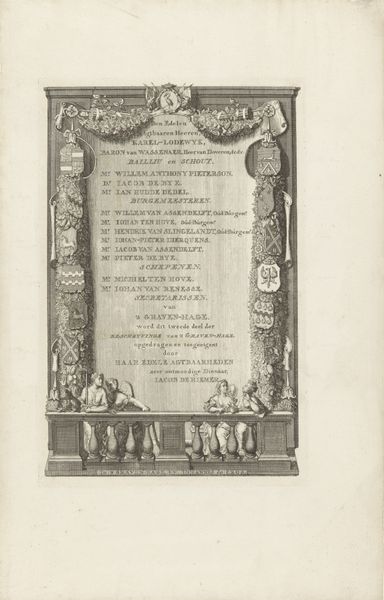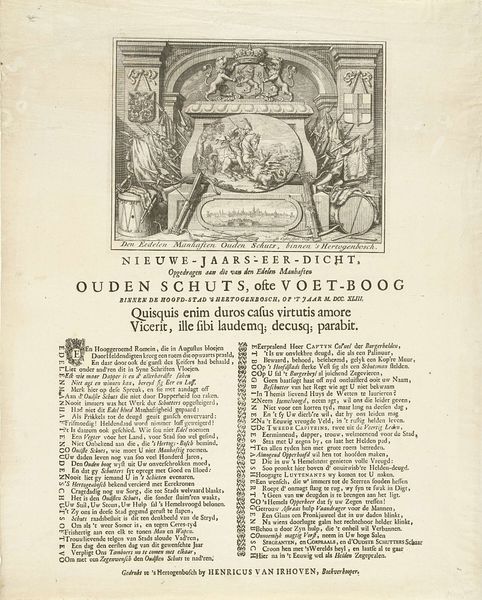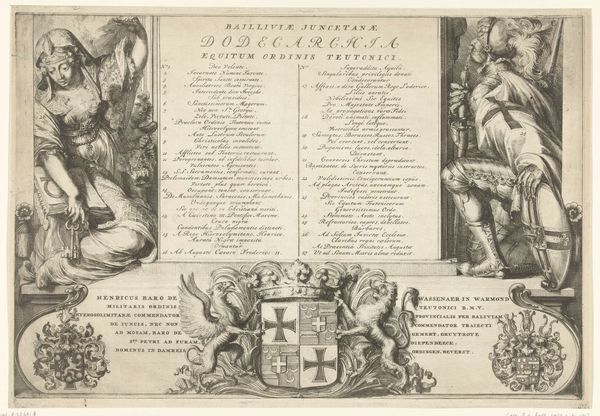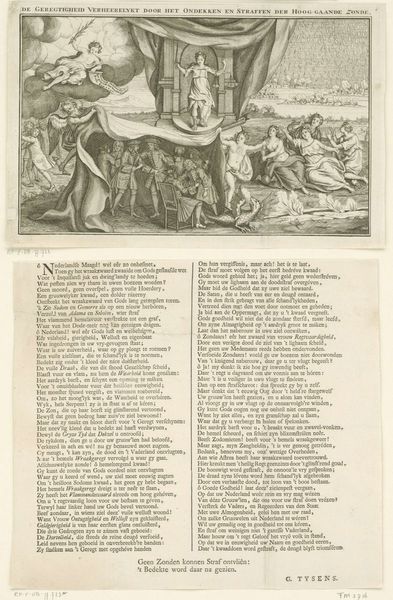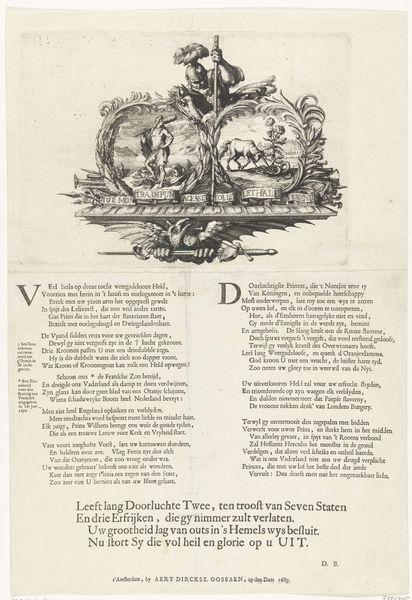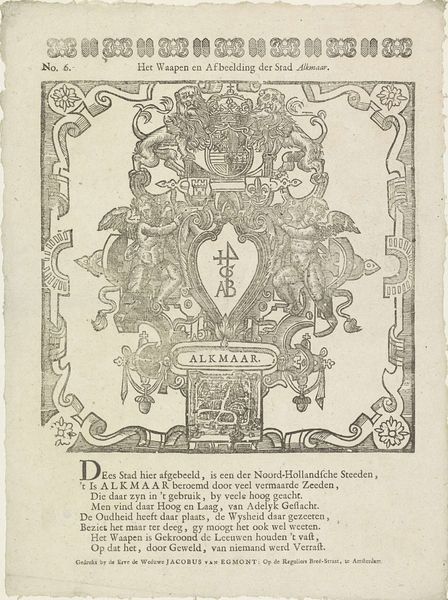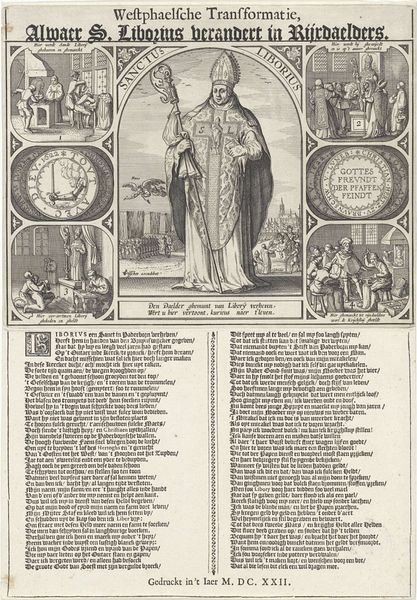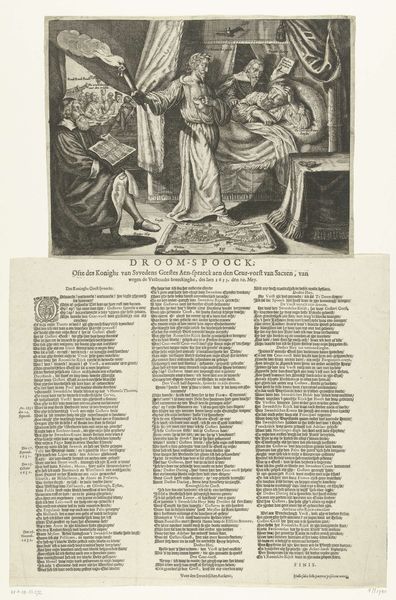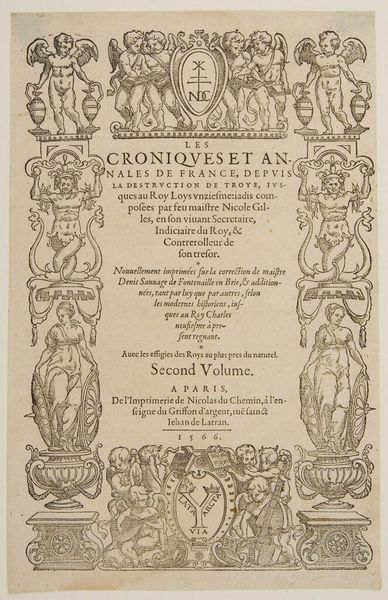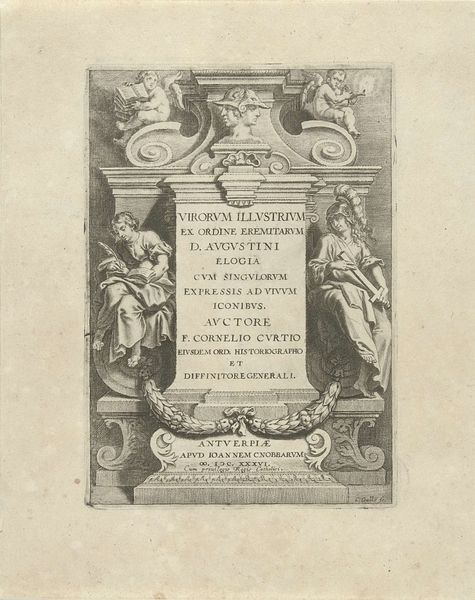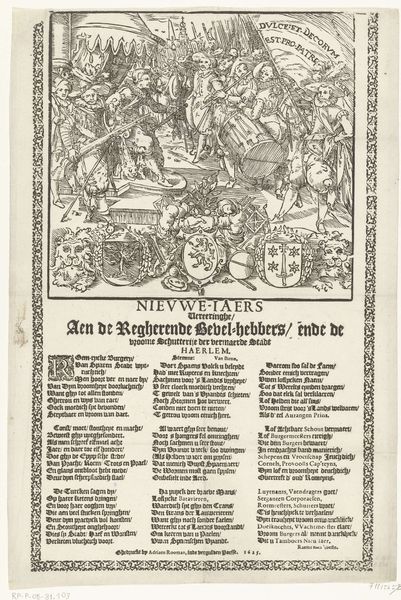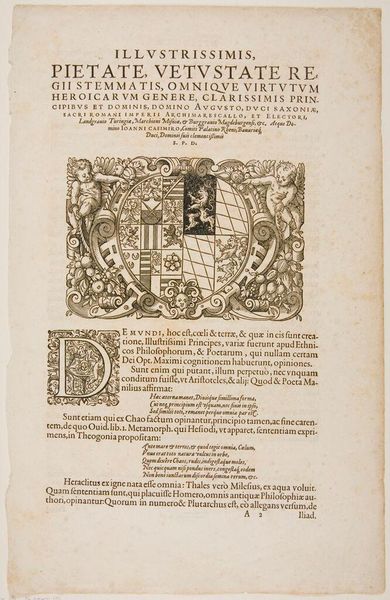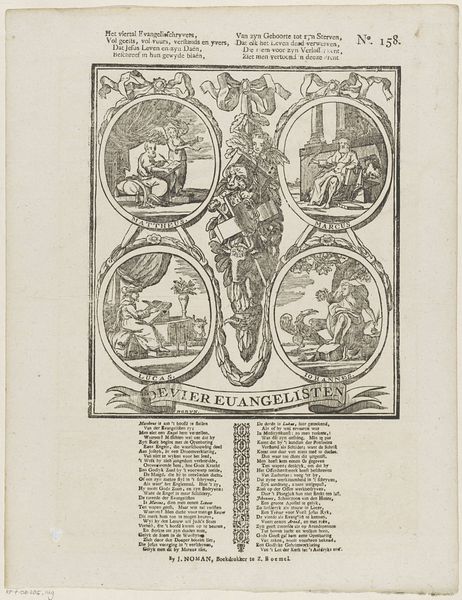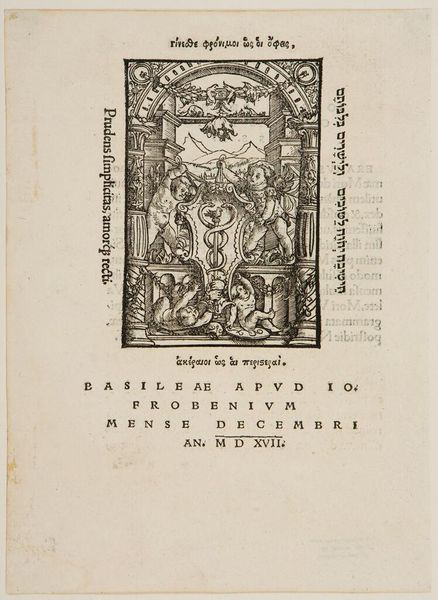
graphic-art, print, engraving
#
graphic-art
#
baroque
#
dutch-golden-age
# print
#
history-painting
#
engraving
#
sword
#
historical font
Dimensions: height 530 mm, width 413 mm
Copyright: Rijks Museum: Open Domain
Curator: Here we have a New Year’s print, titled “Nieuwjaarsprent van de schutterij van Den Bosch, 1744,” created sometime between 1739 and 1744. It's an engraving, made by Hendrik van Irhoven in 's-Hertogenbosch. Editor: My first impression is one of dense complexity. The contrast between light and shadow feels stark, and there’s an ornate, almost overwhelming level of detail. It seems characteristic of baroque art. Curator: Indeed. The composition reflects the values of the civic guard. The upper section features a scene and coat of arms, likely those of Den Bosch itself. Below that is a dedication and verse. The materials – the paper and ink – speak to the printmaking process itself. These were circulated widely to demonstrate the town’s wealth and political strength. Editor: It is fascinating how a print like this can be both a work of art and a record of social practices. How did its means of production—engraving—contribute to the dissemination of values and local political agenda? Curator: Well, consider that engraving allowed for relatively mass production. These weren’t unique, handmade objects. They were meant for circulation and distribution, reinforcing civic pride among members of the local militias. Its artistic choices, for instance, reflect values through symbolism. The lion holding the coat of arms or the pile of weapons show Den Bosch's identity. Editor: That connects the symbolic to the physical—engraving tools and printing presses allowed these abstract concepts of power to be replicated and consumed widely. Also, it blurs the lines of craftsmanship through its labor. Curator: Precisely. This detailed work shows how skilled these artisans had become. Editor: It is interesting how this print allows one to explore artistic intent by diving into the production’s labor and purpose. Curator: Absolutely. Close visual inspection allows viewers to explore its production in 's-Hertogenbosch through historical awareness. Editor: And I see that by observing those lines between craftsmanship, artistic expression, and propaganda, one might decode cultural significance, such as baroque or even Dutch Golden Age identity.
Comments
No comments
Be the first to comment and join the conversation on the ultimate creative platform.
